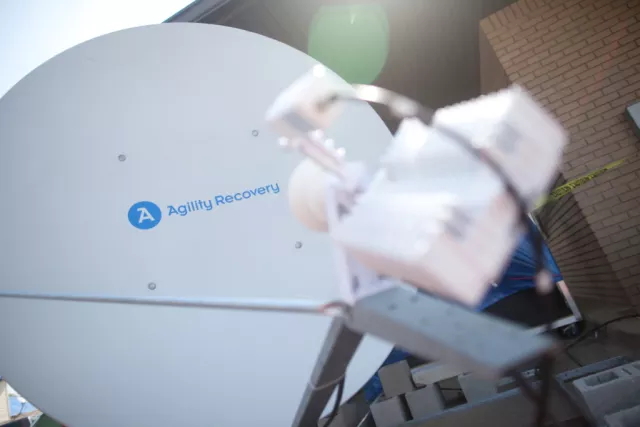Communications in Crisis – “Who You Gonna Call?” And What Will You Say?

Regardless of whether you are afraid of ghosts, tornadoes, wildfires, hurricanes, floods, or man-made crises like acts of terror (the author suggests appropriate levels of concern regarding each of these and more), you must prepare for who you will need to communicate with, what you will communicate, and how you will do so when a crisis befalls your organization. The following are some helpful suggestions for developing an effective crisis communications plan. Start today with some of the basics and then build on those until you are satisfied that you will be able to reach your various audiences.
Start with a General Risk Assessment:
- Identify the top threats to your organization and any vulnerabilities.
- Analyze what business and operational functions are critical.
- Identify the resources needed to continue those critical functions: People, Processes, and Technology required, and Communications needs for each. Establish a Crisis Management Team, and those within that group responsible for Communications.
Develop and regularly update an Emergency Contact List to include:
- Home Phone
- Alternate Mobile
- Personal E‐mail
- Family Contact Information
- Evacuation Plan
Communications Infrastructure
- Develop a tactical response plan for Voice/Phone redirection
- Establish processes & plans to re‐establish your network connectivity:
- E‐mail
- Data Processing
- Virtual Private Network (VPN)
- Remote Services
- Applications
Internal Communications
- Set up an Alert Notification System capable of multiple means of communication to employees, stakeholders and community. TEST regularly.
- Ensure that employee, vendor, and supplier mobile voice communications are not reliant on a single network. Utilize multiple carriers and train all critical personnel on the use of text messaging.
- Establish a separate, formal notification plan for employees’ immediate families and close relatives in the event of loss of life, missing personnel, etc. Additionally, ensure that caregivers, daycare operators, and others upon whom employees may depend for family member support can receive appropriate information.
- Ensure that a formal system exists to integrate new hires into the Crisis Communications Plan and conduct regular trainings to update all personnel on the policies and procedures.
- Establish a secure, universally available, and easily accessible database of information about the company in case of emergency to include company background information, critical documents, key contacts, passwords (if they can be stored in an encrypted format), etc.
- Consider setting up a password‐protected online message board specific to your organization.
External Communications – Online Presence
- Consider establishing a public hotline and/or a “dark” Website that can be activated on short notice to provide critical information during an emergency to everyone in the community.
- Consider using an Online Social Networking Platform for web-based crisis communications (Facebook, Twitter, LinkedIn, etc.) and follow best practices for use of such platforms.
- Establish remote hosting for your entity’s website.
- Ensure proper bandwidth capability for spikes in traffic during crises.
- Ensure remote access to your website, and establish a team to manage updates to the site during disasters.
- Coordinate all Crisis Communications Planning with key vendors and suppliers to ensure a seamless transition.
Media Communications Strategy:
- Designate primary and secondary spokespersons.
- Ensure all Employees know WHO the Spokesperson is.
- Arrange for media to have 24‐hour access to a spokesperson.
- Ensure designated spokespersons have training in dealing with the media.
- Establish a policy for all employee interaction with Media, ON and OFF‐SITE.
- Maintain trustworthy, credible relationships with the media at all times. If you do, the media will be less suspicious and more cooperative during a crisis.
- Identify key audiences and develop a strategy and messaging for each.
- Create key messages and talking points to ensure consistent a message.
- Ensure you have a media kit at the ready containing information about your organization, as well as a list of approved contacts.
- Discuss possible problem areas and potential negative impacts.
- Identify main media outlets through which information about your organization will be disseminated (Radio and TV stations, print media, etc.).
- Find a signage vendor with multiple regional locations to use for signage needs before, during, and after a disaster.
During the Crisis
- Have all employee, vendor, community, and media contact information on hand or in your emergency kit.
- Be the first to break the news about how your organization is responding. Even if the situation is still evolving, begin with full disclosure. ALWAYS respond to media requests.
- Continue to communicate regularly with all key audiences until the crisis has passed. Consistency is important.
- Make an effort to continuously monitor online and offline conversations in order to evaluate the strengths and weaknesses of your strategy and messaging.
- Confirm facts, communicating openly and accurately about the situation. Your communications team must be fully aware of all the facts and know the proper, approved messages. NOTHING is “off the record.”
- Use your Alert Notification System to keep all audiences posted on status and next steps.
- During an evacuation, have a central point of contact for all employees, and ensure you know where your people are located.
- During an evacuation, consider your phone lines ‐ redirection to cell phones, answering service, Google Voice, or Agility lines could be critical.
After the Crisis
- Following the crisis, notify all critical people of next steps.
- Learn from the experience and anticipate the next crisis. Plan for likely and even unlikely scenarios based on this most recent crisis, and know the steps you’re going to take before you have to take them.
- Debrief staff on their experiences, praising people for what went well
- Improve your plan as needed, and aim to regularly update it, including response to lingering fallout from the most recent crisis.



